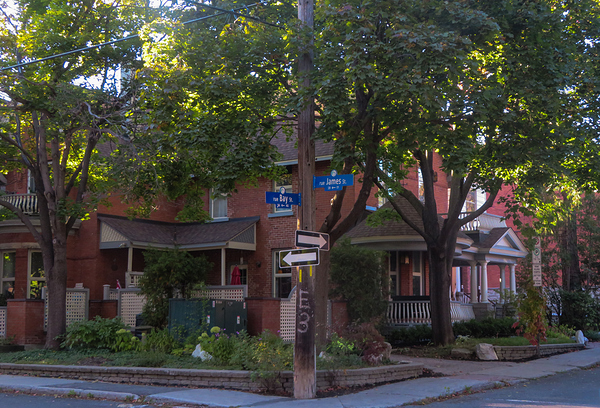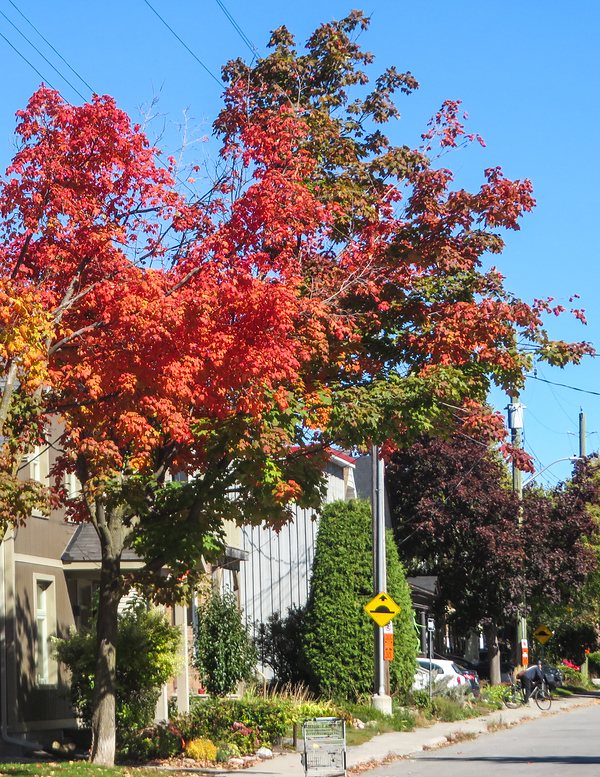Stephen Thirlwall
The City of Ottawa’s plan for the foreseeable future is to greatly expand its suburbs and intensify the core with high-rise construction. The Ontario government’s plan for Ottawa is to have as many new buildings built as possible. While this may spark the economy and create new jobs, how can we ensure this growth will be done intelligently and contribute to the well-being of the people and environment within Ottawa?
And what is the role of trees in assisting this?
Design details are important to development. These must consider not only the building architecture but also the site plan, how it fits into the neighbourhood, its shadow over the landscape, and support services around it in the community. Especially important is its footprint and the space for lawns, gardens, and trees around it.
Both downtown and in the suburbs, new construction usually involves leveling sites as much as possible, removing any existing buildings, trees, and dips and rises in the land. This is followed by digging foundations and constructing the buildings. Trees, anything else natural, and the social impact are only an afterthought.
I recently tuned in to a webinar from the Maryland Department of Planning and the Smart Growth Network on the importance of “street trees” in planning neighbourhood development or redevelopment. The two speakers discussed how street trees can bring beauty and order to streets, mitigate the potential for flooding and heat events, and support pedestrian activity.
It was helpful in showing that not all developers are the same and that any who have the will to do so can be flexible and rebalance what they consider in their design process. Increasingly, more see that nature, particularly trees, need to take a significant role in plans.
Historically, the Romans, who were master road builders, treelined their streets in aesthetically pleasing ways, using a variety of trees placed in various positions, spacings, and combinations along the roadways.
In both older and modern planning of new city extensions, streets are often considered the first and most important step in design. Streets establish the overall layout, structure, direction, movement and character of the community area. Introducing trees at this point in the planning process ensures they are considered important.
Trees in lines, whether straight or curved, enhance all aspects of design. They further beautify and give order, definition and character to neighbourhoods, making people want to go out, walk around, and feel comfortable.
Trees add a layer of environmental awareness, reconnecting us with nature. Each tree with a sizable canopy absorbs a huge amount of carbon dioxide and breathes out volumes of oxygen. This filters our air. Their root systems capture lots of water, decreasing excessive runoff that can cause water control problems.
Having trees along streets means that there is extra space between roads and buildings. This is breathing room where you don’t feel confined, like walking in a canyon. Extra space means extra light in areas with high rises because light enters there mostly down the street corridor and not from above. You have longer sightlines that make the views more interesting. It means that there is room for at least small lawns and gardens that further beautify the landscape.
If trees are neglected in the original plans, it is very difficult and more expensive to correct this later. The result is that a lot of trees get planted in confined spaces where they have little chance of survival, and many quickly die.
Sterile streets without trees
Trees bring people outside. We get to see and know our neighbours and neighbourhood better and socialize more. I have been in some Ottawa suburban areas where trees are few or still too young. The result: streets are empty of people and the landscape sterile.
In the older parts of Ottawa – Centretown and other inner city communities – trees create a garden-like effect. As landmarks, they can also be as important as buildings. Some provide boundaries.
There are historic trees, extremely tall and stately: a few over 100 years old, and many over 60. Shouldn’t our “elders” be treated with more respect? They form the core of the downtown urban forest, along streets and in backyards. They give us filtered light and shade in summer and let light reach us during winter months. Numerous maples provide a variety of leaf shapes and colours through the summer and fall. Flowers bloom on lilacs, magnolias, cherry and plum trees, and many others during the spring and summer.
Those who have been working on the NeighbourWoods Tree Survey in Centretown now personally “know” many of the individual neighbourhood trees. They each have their own distinct personality.
I can tell where I am by the trees on the street
As I walk around Centretown, I can tell where I am just by the trees. One block has a line of crabapple or serviceberry trees, another a line of honey locusts and another lindens or ginkgos. There are locations with clumps of trees: cedars, pines, spruce. One property on Lisgar Street has a small grove of poplars. A few spots have unusual trees, for example, gnarly Siberian olives. The trees give definition yet diverse expression to the landscape.
The spiritual side of people and places is as important as their physical side, but much less considered in city planning. Indigenous people the world over see trees as equal beings to humans. We can use trees to an extent as a resource but not abuse them. For people who relate to spirituality and religion, trees are not just physical entities; they are a living part of creation that have great spiritual meanings.
Trees can symbolically represent the Divine, the pathway to the Divine, our family and community relationships and our own personal spiritual identity. Trees, through analogy, display our human spiritual qualities, such as strength, beauty, and our need to bear fruit in our lives through children and deeds.
Our physical built environment shapes a lot of our thinking. If we build street rights-of-way that are too narrow, spacing between buildings is narrow, yards are small and condo sizes are small – and our thinking becomes narrowed. This kind of thinking is not conducive to “Complete Streets” and “15 Minute Neighbourhoods.”
Similarly, we all know that when we rush something, we often make critical mistakes, because we left out some important detail. CBC radio host and author Terry O’Reilly (Under the Influence) has a good rule – if someone contracts to do a job and they leave out one small but important step, it usually means they have also “cut corners” elsewhere.
The new planning regime being imposed by the Ontario government aims to have development plans approved as quickly as possible in order to reduce developers’ overhead. But what details will be missed? If that includes trees, it could affect our neighbourhoods’ liveability in the long term.
Including trees early in our urban plans is essential.



